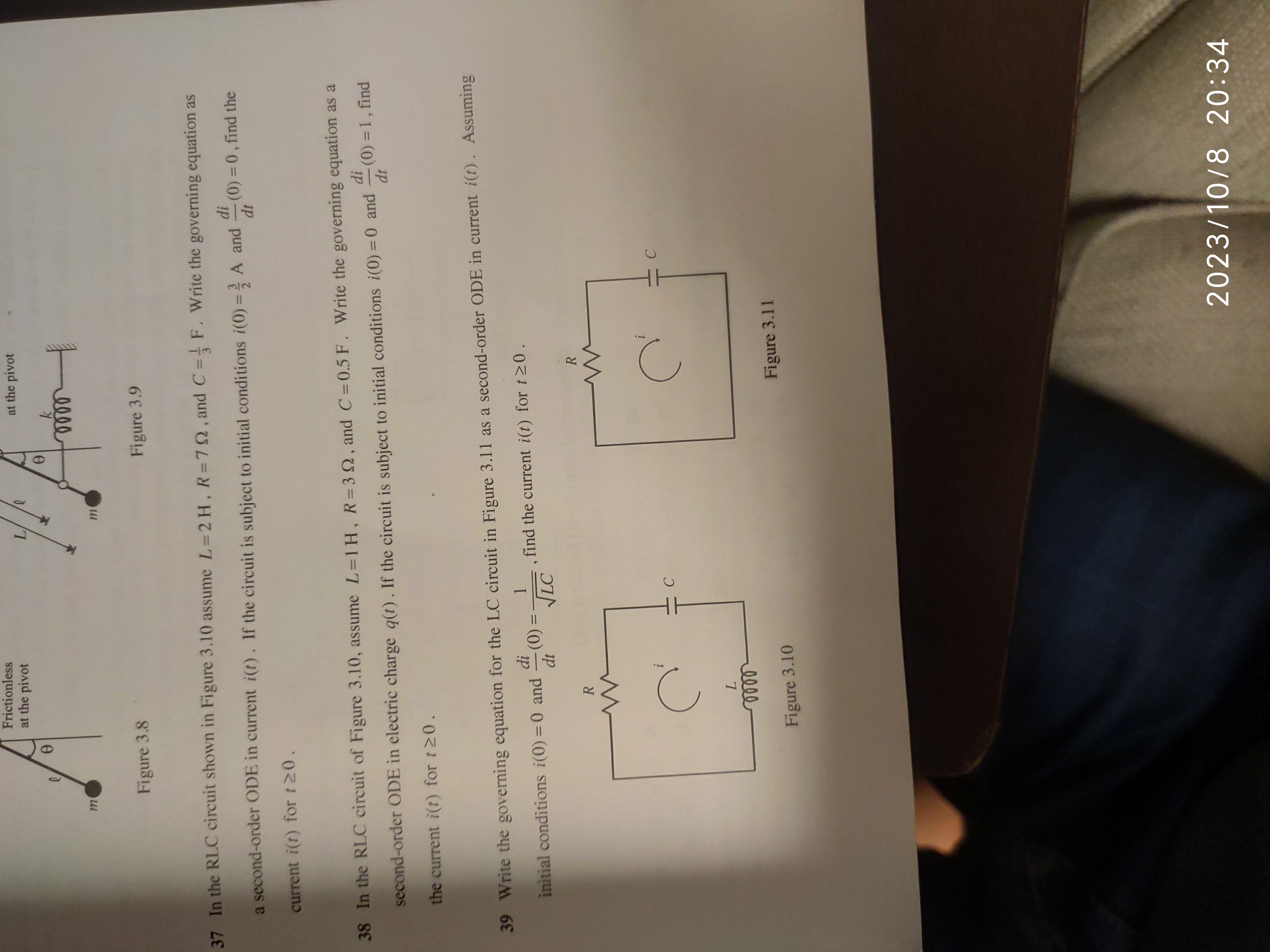Home /
Expert Answers /
Mechanical Engineering /
37-in-the-rlc-circuit-shown-in-figure-3-10-assume-l-2h-r-7omega-and-c-1-3-f-write-the-governing-pa368
(Solved): 37 In the RLC circuit shown in Figure 3.10 assume L=2H,R=7Omega, and C=(1)/(3)F. Write the governing ...

Figure 3.8 Figure 3.9 37 In the RLC circuit shown in Figure 3.10 assume , and . Write the governing equation as a second-order ODE in current . If the circuit is subject to initial conditions and , find the current for . 38 In the RLC circuit of Figure 3.10, assume , and . Write the governing equation as a second-order ODE in electric charge . If the circuit is subject to initial conditions and , find the current for . 39 Write the governing equation for the LC circuit in Figure 3.11 as a second-order ODE in current . Assuming initial conditions and , find the current for . Figure 3.11 Figure 3.10